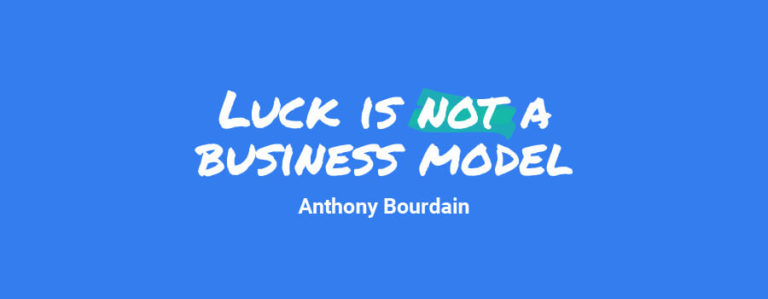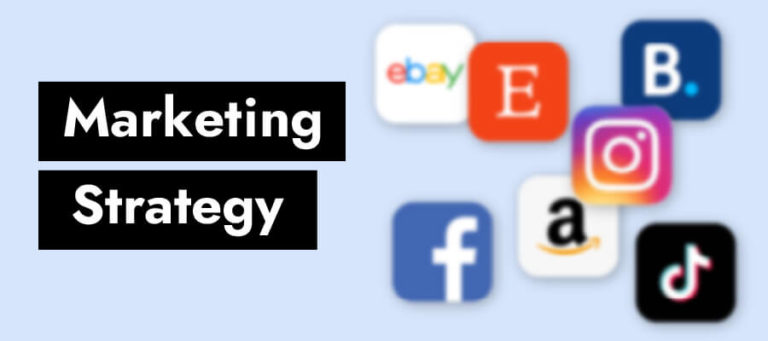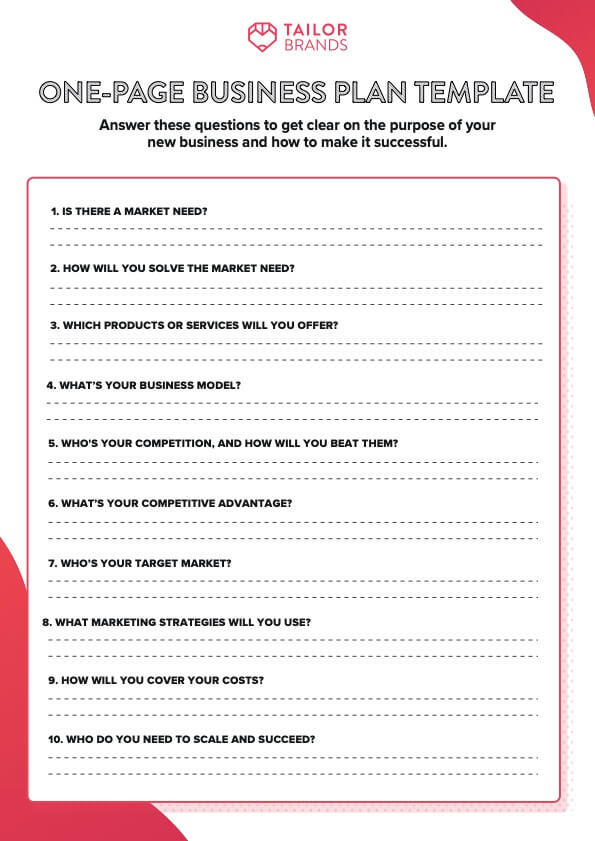
French author-philosopher Voltaire once wisely said, “Judge a man by his questions rather than his answers.”
The same can be said for your business plan.
Every entrepreneur, business owner, inventor, and visionary started their business journey with an inquisitive question.
Yours now might be how do I write a one-page business plan?
If so, we have the answers.
Writing a business plan can seem like a daunting task, but this guide will provide you with the right questions you need to ask in order to get started.
It doesn’t matter whether you’re opening a coffee shop, bed and breakfast, or a construction company. The elements you need to write a one-page business plan remain the same.
Best-selling author Paula Nelson put it this way:
“The best business plans are straightforward documents that spell out the who, what, where, why, and how much.”
To clarify, I’ll use a guest house I opened in 2018 as an example. It quickly became the regional number one online listing, attracted guests from 33 countries, and secured bookings one year in advance.
My small guest house grew into the success it was because I had a strong business plan. It targeted a specific audience, identified a need and provided a solution, held a competitive advantage, a definitive sales strategy, and so on. Basically, my small business was successful because I had a solid business plan as a foundation.

A regular business plan is a formal presentation that must include certain elements and quality standards.
Also called a traditional business plan, it is on average 50+ pages written in business language. You need this document to impress others outside the company, such as investors.
So, if you are meeting with a potential investor, you would present them a regular business plan as opposed to a one-page plan.
A one-page business plan answers the questions you need to know.
It’s quick to write, provides you with a resource to rely on, helps set your goals and implement the strategy to reach them. It shows you where you are and what’s required to achieve success.
The first question you need to answer: Is there a market need?
“If dogs don’t like your dog food, the packaging doesn’t matter.” – Stephen Denny, author and competitive strategy/marketing consultant.
Every successful business has to first confirm the market need. Without a market need, you don’t have a viable business.
A market need is a problem that a specific demographic has, also known as their pain point. When you identify a pain point and an audience craving a solution, you’ve found your market need.
Let’s review a few strategies you can use to confirm market need:
Validate the demand. First step, prove your idea has potential. Validation provides accurate data telling you exactly how many people search for your product/service over a set time – and showing whether your market’s growing or declining.
Assess your competition. Your competitors’ success can also prove the market need. What products/services do they provide? What solution do they solve? And how high is consumer demand?
Listen to your future customers. Look at your prospective customers’ positive and negative reviews to find out what they think. Check out review sites like Trustpilot, Amazon, social media, and your competitors’ websites.
Going back to that guest house I mentioned earlier, I confirmed consumer demand by assessing competitors’ online booking availability at peak and off-peak times. I then determined the gap in the market (AKA, what type of accommodation to offer) by reading customer reviews, finding out what visitors wanted, and what the competition failed to provide.
“Don’t find customers for your products. Find products for your customers”. – Seth Godin, author, and entrepreneur.
Now you must identify how you’ll solve the market need and prove why your solution is better than what’s already available.
To provide a winning solution, first find what is called in marketing your unique selling point (USP). It’s a strategy informing customers about how your product is superior to competitors.
Your USP could be a better product or service, a lower price, a simplified buying process, exceptional customer service, or a new and revolutionary solution to an existing problem. No two successful businesses have the same USP because if they did, they wouldn’t be unique.
When I was determining the guest house’s unique selling point, I looked at others in the market. My competitors were primarily focused on maximum income for minimum cost, and not necessarily on getting customers to return. Identifying that gap is how I found my USP, resulting in hundreds of 5-star reviews and a return client base (not via a third-party site), increasing my profits by 15%.
Before choosing a product or service to sell, ask yourself the following questions:
What are my customers’ hidden desires?
What’s the most significant benefit my product/service can give my customers?
What problems do my prospects have with my competitors, and how can I solve them?
Because it’s not your products that interest people, it’s the results they provide. Put your customers first and fulfill their implicit desires with excellence, and your choice of product or service will become apparent.
The guest house I opened offered exceptional customer service.
Sure, the beds were comfortable, the food excellent, and our view amazing. But most folks remembered the superb service and feeling attended to.
The guest house’s level of service gave value to my customers – providing an instant return to my business by increasing reviews, cultivating a loyal clientele, referring others, and attracting people happy to pay more.
The late Anthony Bourdain, celebrity chef, author, travel documentarian, once said:

A business model outlines how your company will turn a profit selling a product/service to a target audience within a specific marketplace.
However, with so many new businesses models coming online every day, they’re constantly evolving, so no one size fits all. For example, traditional business models include brick-and-mortar stores, franchising, and direct sales.
Hybrid models (businesses like my guest house) combine internet sales with a physical location.
Your business model’s purpose is to ensure you’ll profit using the proper marketing channels and payment gateways for incoming revenue.
Now’s the time to be ruthless with the numbers. Account for every outgoing, like set-up costs, fixed costs, product production and packaging, sales, and shipping. Research your competitors to find the base price point for what you’re offering.
For the guest house, I had a hybrid model using online marketing to rent vacation rooms through third-party holiday booking sites. I then added Google My Business, a website, and local off-line physical marketing materials as my customer base grew. It was heavily focused on return customers and referrals to reduce third-party percentage sales costs, increasing revenue. Payment gateways included online payments via third-party sites, my website, and on-site.
“I’ve been up against tough competition all my life. I wouldn’t know how to get along without it.” – Walt Disney, you know the guy!
Without competition, you’ve got one of two things: A business idea no one wants, or one no one yet knows they need.
Both are unsuitable business models for a small business. The ideal business model should have high customer demand, healthy competition, and room for a savvy innovator like you to move in.
You beat your competitors by identifying them, what they offer, and which marketing channels they use to engage their target audience. And you find those by running a competitor analysis.
A competitor analysis identifies your competition’s strengths and weaknesses, their marketing strategies, advertising platforms, and any crucial marketing opportunities they may be missing. Doing so gives you a competitive advantage.
The guest house I opened had 42 established competitors, all with a long booking site history and hundreds of reviews.
However, average review scores were low (8.2 on Booking.com and 3.8 on Google), the negatives being customer service, facilities, and breakfast. Most competitors weren’t taking advantage of visuals, using low-quality photographs. Fewer still were active online, failing to reply to customer comments and testimonials.
“If you don’t have a competitive advantage, don’t compete.” –Jack Welch, ex-CEO of General Electric.
A competitive advantage is your company’s ability to outperform your competitors in one or more ways. That is called a unique value proposition (UVP).
Your unique value proposition is the solution and benefit your USP provides. Your UVP’s an in-your-face marketing statement describing exactly how you’ll bring value to your audience, highlighting what makes you unique to the marketplace.
Ask these questions to find your answers:
Relevancy: How does your product or service solve your customers’ pain points or improve their situation?
Quantified value: In what way will you deliver those specific benefits?
Differentiation: Why should your ideal customer buy from you and not from your competition?
The guest house’s unique selling point was superior service, stunning views, comfortable bedrooms with extra facilities, and a 5-star quality breakfast using local produce, catering for all food intolerances.
Our unique value proposition was marketing.
I was at an immediate disadvantage to our competitors. Our location was 2 miles from town, which meant customers needed transport, so I promoted a free taxi service. It became one of our leading USPs.
I took beautiful photographs and wrote engaging descriptions of the property, breakfast, and facilities down to the last detail – removing any doubt from my target audience’s mind.
And, I created a cohesive and recognizable brand by using the same images, bio, and family pictures on all our marketing platforms.
“Everyone is not your customer”. –Seth Godin, yep him again!
Your target market is the consumers who you’ve proven want what you’re selling.
By identifying your target market and their preferred marketing channels, you can define your marketing strategy around their needs – at the same time, highlighting your UVP to engage and connect with them at every opportunity.
You gain an understanding of your target market by creating a buyer persona. It’s a fictional character created using accurate research data that provides relevant information about your audience.
The aim is to identify a niche audience you’re confident your marketing will convert into paying customers.
My guest house was located at a hot spot for bachelor and bachelorette parties. There were businesses providing a service catering to their specific needs. It was clear that local couples and families were unhappy sharing facilities with an overly jubilant crowd.
I’d found our target market. We quickly gained the reputation as the go-to property for those wanting a quiet, relaxing holiday. My target market is less trouble, more appreciative, stay longer, and pay more for our service.
“Good marketing makes a company look smart. Great marketing makes the customer feel smart.” –Joe Chernov, ex-VP of marketing at HubSpot.
Now your goal is to define your marketing (sales) strategy to maximize your ROI (return on investment) and create a highly optimized presence within your niche.

You define your marketing strategy by identifying the channel your target audience uses most to search for and buy your product.
You identify it by looking at your competitors’ websites and social media platforms, and by checking out third-party sales websites such as Amazon, eBay, Etsy, or in my example, Booking.com.
I opened the guest house in the height of summer after establishing Booking.com as my target audience’s preferred platform. And although the site charges a hefty 15%, the pay-off was worth it.
By focusing on my target audience and using the highest converting booking platform, I took 67 bookings in my first 4 days. And by providing unparalleled service (on a platform driven by reviews), I had 104 primarily 5-star reviews by the end of the summer, resulting in a 9.8 score.
This enabled me to spread my marketing net to include Google My Business and website. With all 3 marketing platforms working, I booked out one year in advance and could raise the prices.
“Never take your eyes off cash flow because it’s the lifeblood of business.” –Richard Branson. He signed the Sex Pistols, built an airline and a spaceship, and flew to space!
Did you know most new businesses fail due to a lack of cash flow?
It’s critical to know your numbers and write up a financial summary (budget and sales goals) to stay afloat.
A financial summary could be as simple as an Excel spreadsheet, and includes your setup costs, running costs (products, shipping, utilities, rent, marketing, etc.), and most importantly, your break-even point. Your break-even point is when your credit equals your debit, and if you run your business correctly, profit soon follows.
Your cash flow is the net balance of cash moving in and out of your business at a specific point in time and the amount you need to keep your business running. And by maintaining a balance sheet, you keep your eyes on your cash flow.
Include these in your one-page business plan:
Expenditure and budget. Account for every expense, no matter how small (and keep the receipt)!
Sales goals. The quantity of products/services you’ll sell and at what price to surpass your break-even point and make a profit.
Net profit. Your estimated end-of-tax-year profit after you’ve subtracted all your debits.
When I did this for the guest house, I required an initial investment for renovations, fitting out, and stock (food and beverages, etc.).
I reduced the outgoings by doing all the construction work myself and living on pasta! And as I used a free marketing strategy (Booking.com only charge after rentals), my advertising costs were almost zero. Bookings were in advance, so I could accurately forecast credit, debit, break-even point, and the gross/net profit.
“You’re only as good as the people you hire.” – Ray Croc, who gave the world fast food and McDonald’s. Thanks, Ray!
Now’s the time to think about who you’ll need to help scale your business, because hiring people with the right talent produces successful results.
Look at each step of your one-page business plan, such as accounting, marketing, product development, and ask yourself, do I need support to make that happen? If so, seek out people wiser and more experienced than you in those areas.
From one small business owner to another, don’t hire in-house at this early stage. You can outsource on a contractual basis, ensuring you’ve got who you need when you need them – helping you reduce costs and put your business plan into action.
We’ve created a downloadable template for you to use. Check it out and click the link below to download:

A one-page business plan is the blueprint that will guide your business towards achieving its goals.
For anyone starting a business, creating a business plan is an important first step.
Follow this guide to write your very own business plan, and you’ll have a document that will set your business on a path for success.
This portion of our website is for informational purposes only. Tailor Brands is not a law firm, and none of the information on this website constitutes or is intended to convey legal advice. All statements, opinions, recommendations, and conclusions are solely the expression of the author and provided on an as-is basis. Accordingly, Tailor Brands is not responsible for the information and/or its accuracy or completeness. It also does not indicate any affiliation between Tailor Brands and any other brands, services or logos.
Products
Resources
@2024 Copyright Tailor Brands